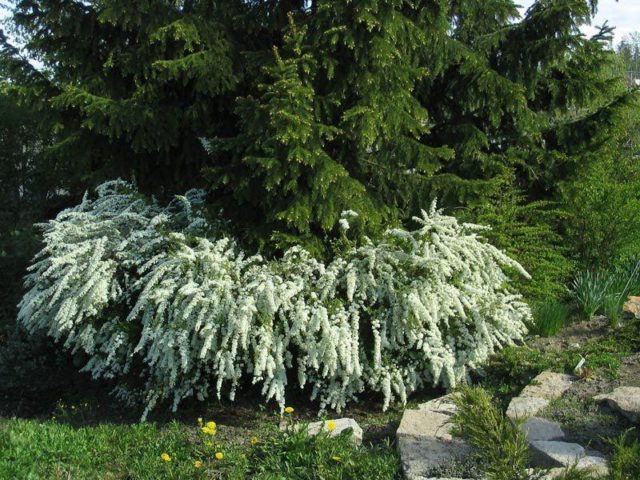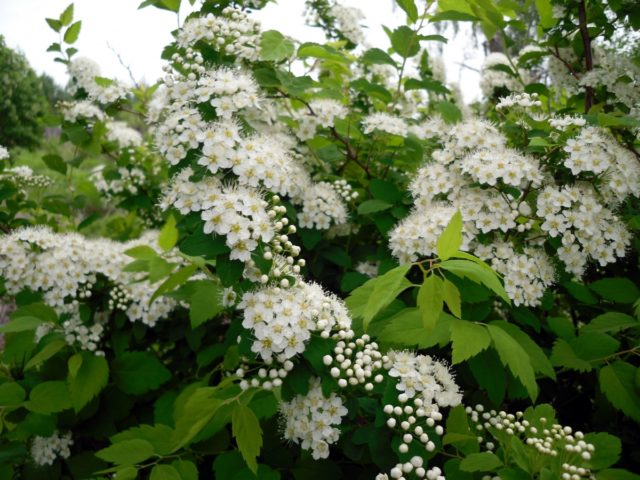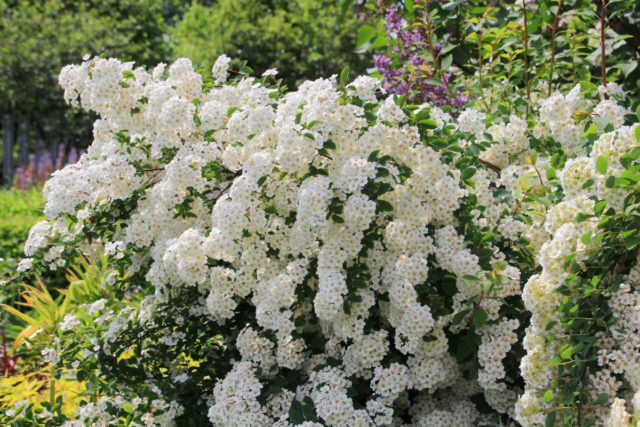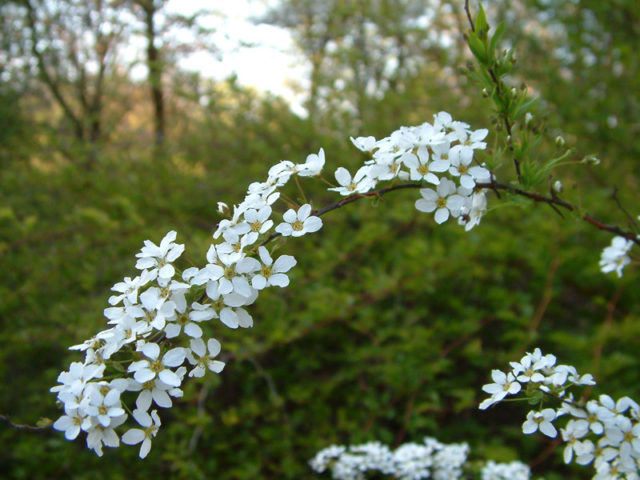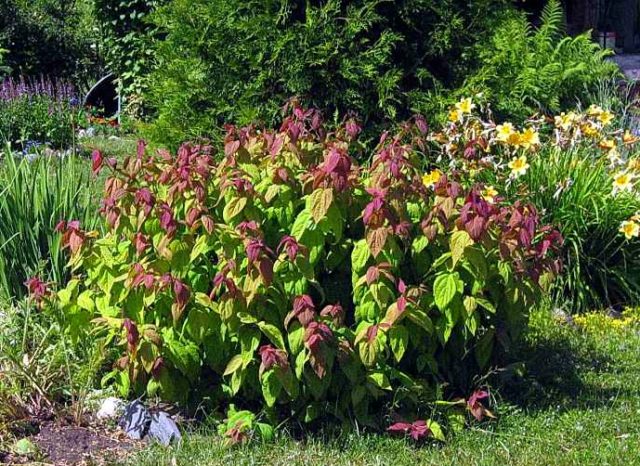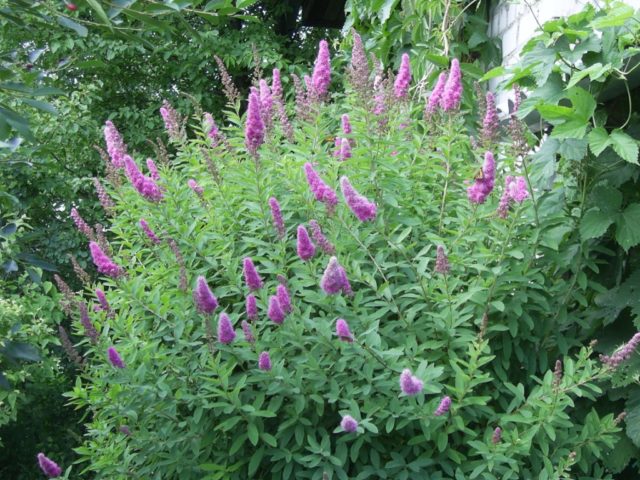Content
Spirea pruning is an important point in the care of flowering shrubs. Since there are many spirits, there are different types and varieties, it is important for the gardener to determine which bush is growing on the site. According to the group, spring- or summer-flowering, pruning is carried out.
Do I need to trim the spirea after flowering
For the decorative effect of the shrub, regardless of the flowering period, the wilted panicles are removed. This is especially important for spirits, in which foliage is sometimes even more picturesque than flowers. Decorative pruning of spirea, which fades in late July or early August, emphasizes the expressive autumn colors of the leaves and the shape of the trimmed bush.
Early spring pruning is different for shrubs that bloom in spring or summer. But after flowering, in June, it is imperative to remove branches with wilted inflorescences from spirits that bloomed in May or early June. Their flower buds are laid in the fall along the entire length of the branch. Over the summer, a full-fledged shoot is formed, which will bloom the buds next spring. Achieve the lush shape of the bushes of the spring-flowering group by special pruning of the spirea after flowering. Tall flexible shoots are shortened by a third or half. From the remaining buds, several young branches grow, on which buds are formed.
Those meadowsweet shrubs, as they also call the spirea, which bloom in summer, are ordered as desired also after the panicles have wilted. But if pruning does not take place, it is carried out in early spring. Summer flowering species form buds with buds on the shoots of the current year. After removing old branches in April, the plant will still create new ones by the beginning of flowering in July. Pruning spirea paniculata after flowering is not as important as for those plants that bloom in spring.
When to trim spirea
Varieties of crops such as:
- Wangutta;
- Gray;
- Thunberg;
- Arguta;
- Oak-leaved;
- Nippon;
- Average.
and some others, less common, are pruned in early summer, when flowering has ended. All these shrubs lay flower buds by autumn. Therefore, the March or April shaping pruning is contraindicated for them. At this time, only rejuvenating pruning is carried out, when the entire bush is cut off at ground level.
Sanitary pruning is also acceptable, in which the frozen ends of the shoots are cut off, as well as small shoots inside the bush.
Other spireas:
- Douglas;
- Boomald;
- Billard;
- Willow;
- Birch-leaved;
- Japanese;
- White;
- Felted
and a few more rare species are cut off either after flowering, from late July to early August, or in early spring. Plants form buds for buds on shoots growing in spring. When working with spirea, you need to know that the formation of a shrub contributes to the creation of a larger number of shoots with flower buds.
Types of pruning
When a summer-flowering spirea is cut, several different cutting methods can be applied to it, depending on the age and purpose of planting the shrub. On single bushes, pruning is carried out, starting at 3-4 years of age, so that more new shoots are formed for flowering. For proper pruning of spireas, the following types of processing are practiced in the spring:
- sanitary, or cosmetic;
- formative;
- stimulating;
- anti-aging.
Separately, you can put the trimming of the spirea, which creates hedges.
Almost the same types of pruning are used for spring-flowering meadowsweet, but they are carried out after flowering. Spirea pruning in summer is easily tolerated by the plant. Radical treatments to rejuvenate the bushes are also performed in the spring.
A beautiful shrub is formed by pruning and rejuvenation.
How to properly trim spirea
They work with the bushes as soon as the snow melts. Carrying out sanitary pruning of any meadowsweet bushes, they get rid of damaged shoots and weak overgrowth inside the bush. The plant gives strength to healthy branches by increasing the number of buds. Remove all last year's dry inflorescences from summer flowering bushes. And for early flowering spirea, the care includes pruning of weak branches and old, 7-10-year-old shoots in March-April. The frozen tops are also cut off. When shortening the shoot, make sure that the cut falls over the bud, which grows outward.
Stimulating treatment means shortening branches so that they can grow. The shrub becomes lush and more decorative with many inflorescences.
Young shoots of meadowsweet, which blooms in summer, are shortened over well-developed buds, from which branches with buds grow in the spring. The same procedure for spring flowering species is performed in June. Bushes with old shoots transform, leaving only 25-30 cm of the trunk above the ground. The plant will renew itself more lush.
Formative pruning of spirea bushes is also carried out in spring or summer. Cutting off parts of the shoots for the growth of new branches, they try to make the cutting lines at the same level, gradually rounding the silhouette of the bush. The formation of a hedge from meadowsweet bushes, which blooms in July, is postponed at the end of August, in the spring it remains only to trim the lines. At the same time, the shrub is thinned out inside, removing old and twisted branches. Thickening can provoke the development of fungal diseases or create a cozy environment for pests. The thickening of the meadowsweet bush is controlled every 2-3 years. For the formation and pruning of early flowering spirea, the frozen branches are removed, and dense thickets are thinned out. To improve tillering, the longest shoots are shortened by 20-25 cm.
Achieve rejuvenation of the shrub by completely trimming the trunks to the level of the root collar. Sometimes only 5-7 last year's branches are left. Such measures are taken for old plants, after 10-12 years of development. Thanks to such pruning, spireas, the trunks of which live 15-19 years, will develop for a long time in the place chosen by the gardener.
Features of pruning spirea of different varieties
To put in order the meadowsweet bush, which grows in the garden, it is only necessary to study its characteristic data and determine the type.
Pruning white spirea after flowering
The species is widespread in cities and towns of Russia. Branches with brown bark form a bush up to 1.5-1.7 m high. The leaves have sharp tops. Snow-white inflorescences, fluffy due to the numerous long stamens, bloom in July. Withered shields are pruned from August so that the plant does not waste energy to form seeds, and the branches are strengthened. In the spring, meadowsweet is cleared of frozen and broken branches, forming a silhouette. Starting at 4 years of age, the shrub is periodically cut off after a few years up to 30 cm above the ground.
Spirea Pruning Bride
A favorite spring-flowering plant in many gardens in April is only cleared of frozen tops and thinned out. Spirea Vangutta, this is the specific name of the national favorite, can grow up to 3 m, with the same crown diameter. Flowers bloom on drooping branches in a picturesque white waterfall. For this spirea, summer pruning begins after flowering. Each long shoot is cut in half. Branched branches - by one third. In the spring, the shrub is rejuvenated by getting rid of trunks older than 7 years.
Pruning Thunberg spirea
This species is similar to the Wangutta spirea, but its flowers are not so fluffy because the stamens are smaller and shorter. Shoots appear longer and more graceful. And it blooms earlier, when there are still no leaves on the branches. Apply formative pruning of spring spirea after flowering, from June.
Trimming spirea Macrophila
Early spring pruning is applicable to a powerful, up to 1.3-1.5 m, and fast-growing species with large, bright leaves. The variety is magnificent, not only pink flowers that bloom in July are decorative, but also leaves 15-20 cm long, 8-10 cm wide.
In the spring, the foliage acquires a certain reddish tint, in the fall it is golden-purple. There is one subtlety when pruning a plant. When an adult shrub is cut on the ground, leaving only 7-12 cm of trunks, the upper foliage of the growing shoots will be painted in burgundy-red tones. After 3-4 years, periodically all shoots are shortened in April or May to 30 cm above the soil.
How to cut willow spirea
A short, up to 1-1.2 m, bush of this type of meadowsweet with narrow leaves enchants with white and pink paniculate inflorescences, up to 20 cm in length, which bloom in summer. Pruning of willow spirea is standard, as for all summer-flowering species, in April.
Care after pruning
After removing branches or parts of shoots, meadowsweet are abundantly watered and fed during mulching using peat or compost. After summer pruning, the shrub is maintained with a mixture of organics and minerals. Mullein is cooked in a 1: 5 ratio. 10 g of superphosphate, already diluted in a liter of hot water and infused throughout the day, is mixed into the bucket with mullein infusion. 10 liters of liquid dressing are poured under 1 bush. The day before fertilization, the bush is watered so that the nutrients get into the damp soil and are absorbed faster by the roots. Some time after applying top dressing, the trunk circle is spilled with another bucket of water if the soil is not sufficiently moistened. Sawdust or compost foliage can be used as mulch.
Conclusion
Pruning a spirea will turn any shrub into a flowering accent in your garden. The culture blooms for a long time, but it is important to first determine the type and properly cut the plant. A little care and simple maintenance helps the beautiful shrub to develop new areas.
